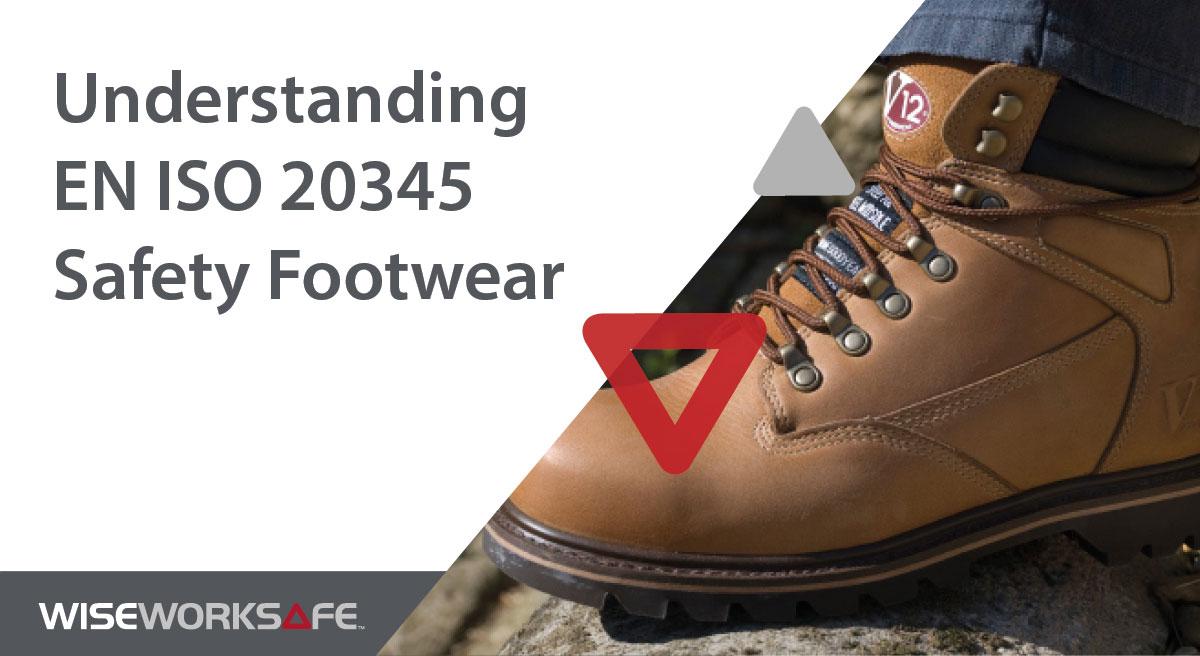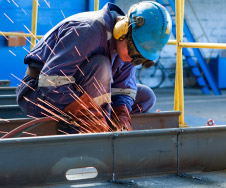Originally published on 19th December 2018
Updated 27 November 2019
EN ISO 20345 Explained - Safety Footwear Standard

Protecting feet against hazards in the workplace by providing appropriate safety boots is key to keeping workers safe. The safety footwear you choose for your employees should meet legal standards and be appropriate for the task, the individual and the environment in which they are working. It must also be used and cared for correctly by those wearing them. Employers are legally responsible for providing the correct footwear as part of the Personal Protective Equipment at Work Regulations 1992.
We understand that it can be confusing to decide which safety shoes are suitable for your workers, so we’ve put together this guide to explain the most important safety footwear standard.
What is EN ISO 20345?
Assessing the Risks
- Wet conditions
- Electrostatic build-up
- Slipping, cuts and punctures
- Falling objects
- Metal and chemical splash
- Extreme temperatures
- Outdoor or indoor use
EN ISO 20345 Safety Ratings Explained
|
|
Safety footwear made from leather and other materials (not rubber/polymeric)
|
All-rubber or all-polymeric (waterproof wellingtons)
|
|||||||
|
Rating
|
SB
|
SBP
|
S1
|
S1P
|
S2
|
S3
|
SB
|
S4
|
S5
|
|
200 joules toe cap
|
✓
|
✓
|
✓
|
✓
|
✓
|
✓
|
✓
|
✓
|
✓
|
|
Closed seat region (fully enclosed heel)
|
|
|
✓
|
✓
|
✓
|
✓
|
|
✓
|
✓
|
|
Energy absorption at seat area
|
|
|
✓
|
✓
|
✓
|
✓
|
|
✓
|
✓
|
|
Antistatic properties
|
|
|
✓
|
✓
|
✓
|
✓
|
|
✓
|
✓
|
|
Water penetration & absorption resistance
|
|
|
|
|
✓
|
✓
|
|
|
|
|
Penetration resistant midsole
|
|
✓
|
|
✓
|
|
✓
|
|
|
✓
|
|
Cleated outsole
|
|
|
|
|
|
✓
|
|
|
✓
|
EN ISO 20345 Slip Resistance Ratings Explained
EN ISO 20345 Additional Ratings Explained
What Features Should You Look for in Safety Footwear?
Maintaining Compliance with EN ISO 20345
- Checking for faults, damage, dirt, wear and tear
- Testing to ensure they’re performing as intended
- Cleaning regularly to avoid build-up of dirt (referring to manufacturer’s instructions)
- If there is damage, repair where possible
- Where they are damaged beyond repair they will no longer comply with the standard and should be replaced
 VIEW BASKET
VIEW BASKET




